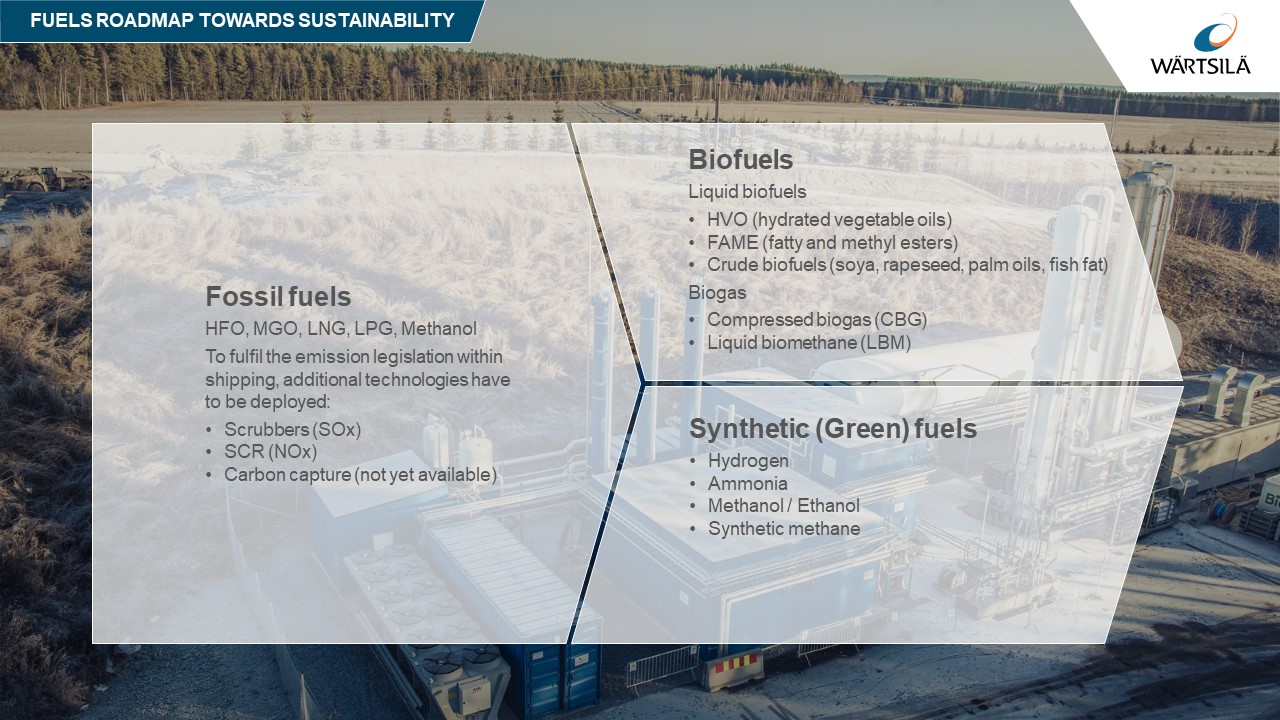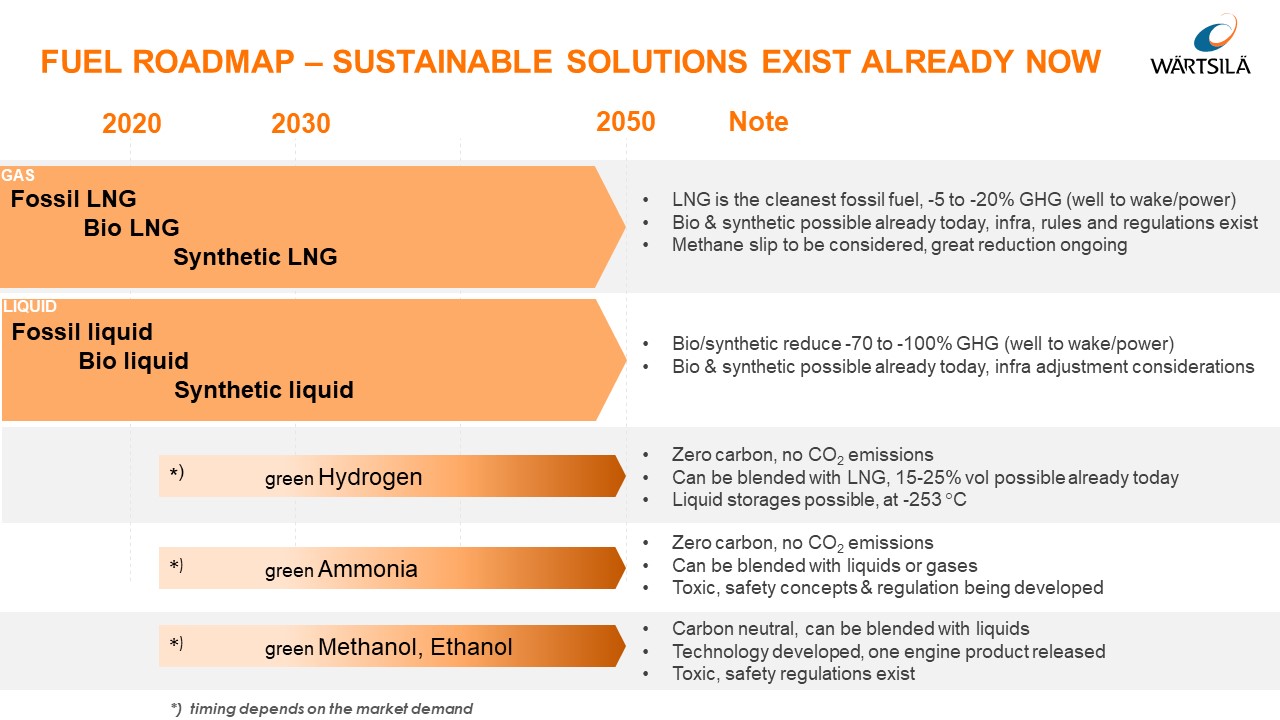

Wärtsilä organised a call for sell-side analysts on September 23rd with Juha Kytölä, Director of R&D and Engineering. In the event, Juha provided an introduction to future fuels, which was followed by a Q&A session.


Do you think that hydrogen is likely to be used in marine propulsion in the future?
Interest in hydrogen is currently higher in land-based applications. However, there has been some interest also in the marine industry for smaller ships. The main concern with hydrogen in marine applications is how the fuel would be stored and logistically handled on ships, as liquid hydrogen takes eight times more space than liquid fossil fuels and requires low storage temperatures (-253°C).
How much would methane slip need to reduce for LNG to be advantageous compared to other fuels?
We have already passed that point, and we are developing the technology even further. A shift to LNG can save around 5-20% in GHG emissions counting in the methane slip; without any methane slip, emission savings could go up to 25%.
What surrounding technologies need to be put in place to promote the use of new fuels?
Today, we are developing proof points and showing what is possible. However, the technology is not the only dimension, but fuel availability is also important. We think that there will be geographical differences in the availability of new fuels. Our strategy is to make proof points for all the technologies, so that when the fuel supply is there, we are ready. We are also involved with fuel producers and understand the connecting points there, even though we are not producing the fuels ourselves.
How much content do you provide for a vessel that uses new fuels?
When you convert an engine to work with a certain fuel, it impacts some modules of the engine, such as the fuel handling module. However, the engine is still the same. The fuel handling system depends on the fuel. For example, ammonia is corrosive, which needs to be taken into consideration in the tank design. A traditional carbon steel tank might corrode with ammonia, so the tank would need to be stainless steel instead of carbon steel.
What are the prospects of green ammonia as a future fuel in the maritime industry? Are NOx emissions related to using ammonia as a fuel concerning?
Ammonia is one of the potential fuel candidates. Especially in Norway, there is a lot of faith in ammonia. Ammonia combusts slower than other fuels, but the combustion is still rather perfect. We have worked with ammonia for many years already and have achieved complete combustion in our tests. However, as there is nitrogen and hydrogen involved in the combustion, there is a risk for NOx emissions. N2O is of a bigger concern because of its high greenhouse gas impact. We hardly see any N2O emissions with our technology at the moment.
Will there be a conversion issue if the fuel transition includes going from gas to liquid or vice versa?
Our products have dual fuel technology, so our engines can run either on gas or on liquid, or even on both together. It is also possible to convert a pure liquid system to a gas system or vice versa. Converting a liquid system to a gas system requires more modifications than the latter. We have also supplied gas conversion solutions to our customers.
Why go for a scrubber system today with the fuel transition coming?
Customers who believe in heavy fuel oils need to install a scrubber and probably a catalyst as well. These customers must further reduce CO2 emissions in the future. Wärtsilä is developing solutions to address this issue as well.
Interested in reading more on this topic? Check out these posts in our Twentyfour7 Insights blog:
Forecasting the fuels of the future https://www.wartsila.com/insights/article/forecasting-the-fuels-of-the-future
Supporting shipping’s
switch to clean fuels https://www.wartsila.com/insights/article/supporting-shipping-s-switch-to-clean-fuels